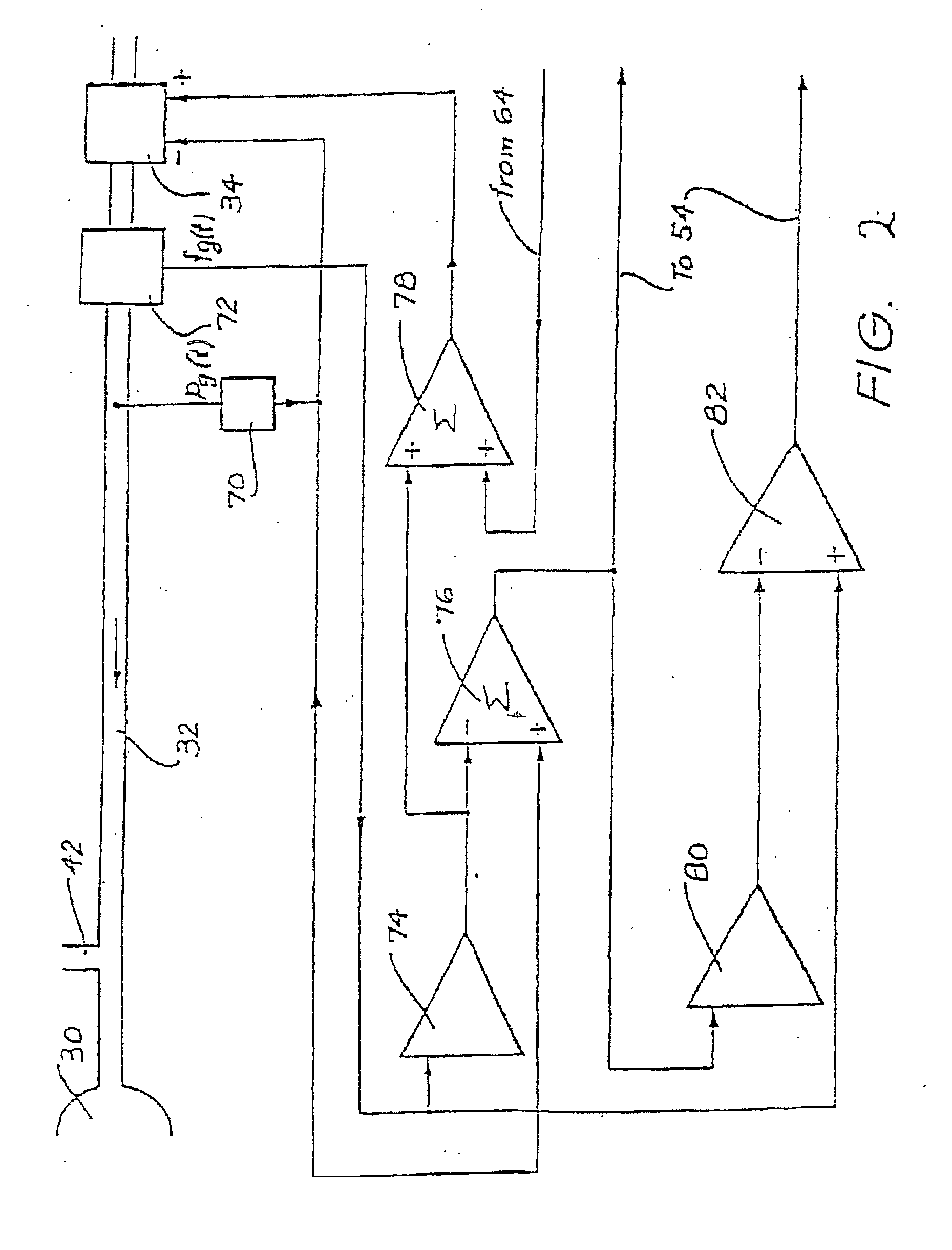Determination of apnea/hypopnea during cpap treatment
a technology of cpap and apnea, applied in the field of cpap treatment, can solve the problems of decreased ventilation (hypopnea), decreased blood oxygenation, and disruption of sleep, so as to reduce noise sensitivity, reduce memory demands, and simplify the
- Summary
- Abstract
- Description
- Claims
- Application Information
AI Technical Summary
Benefits of technology
Problems solved by technology
Method used
Image
Examples
Embodiment Construction
[0030]FIG. 1 shows, in diagrammatic form, CPAP apparatus in accordance with one embodiment. A mask 30, whether either a nose mask and / or a face mask, is sealingly fitted to a patient's face. Breathable gas in the form of fresh air, or oxygen enriched air, enters the mask 30 by flexible tubing 32 which, in turn, is connected with a motor driven turbine or blower 34 to which there is provided an air inlet 36. The motor 38 for the turbine is controlled by a motor-servo unit 40 to commence, increase or decrease the pressure of air supplied to the mask 30 as CPAP treatment. The mask 30 also includes an exhaust port 42 that is close to the junction of the tubing 32 with the mask 30.
[0031]Interposed between the mask 30 and the exhaust 42 is a linear flow-resistive element 44. In practice, the distance between mask 30 and exhaust 42, including flow resistive element 44 is very short so as to minimize dead space volume. The mask side of the flow-resistive element 44 is connected by a first s...
PUM
 Login to View More
Login to View More Abstract
Description
Claims
Application Information
 Login to View More
Login to View More - R&D
- Intellectual Property
- Life Sciences
- Materials
- Tech Scout
- Unparalleled Data Quality
- Higher Quality Content
- 60% Fewer Hallucinations
Browse by: Latest US Patents, China's latest patents, Technical Efficacy Thesaurus, Application Domain, Technology Topic, Popular Technical Reports.
© 2025 PatSnap. All rights reserved.Legal|Privacy policy|Modern Slavery Act Transparency Statement|Sitemap|About US| Contact US: help@patsnap.com



